Android Activity的启动器ActivityStarter入口
Activity启动器入口
Android的Activity的启动入口是在ActivityStarter类的execute(),在该方法里面继续调用executeRequest(Request request) ,相应的参数都设置在方法参数request中。代码挺长,分段现在看下它的实现,分段一:
/*** Executing activity start request and starts the journey of starting an activity. Here* begins with performing several preliminary checks. The normally activity launch flow will* go through {@link #startActivityUnchecked} to {@link #startActivityInner}.*/private int executeRequest(Request request) {if (TextUtils.isEmpty(request.reason)) {throw new IllegalArgumentException("Need to specify a reason.");}mLastStartReason = request.reason;mLastStartActivityTimeMs = System.currentTimeMillis();mLastStartActivityRecord = null;final IApplicationThread caller = request.caller;Intent intent = request.intent;NeededUriGrants intentGrants = request.intentGrants;String resolvedType = request.resolvedType;ActivityInfo aInfo = request.activityInfo;ResolveInfo rInfo = request.resolveInfo;final IVoiceInteractionSession voiceSession = request.voiceSession;final IBinder resultTo = request.resultTo;String resultWho = request.resultWho;int requestCode = request.requestCode;int callingPid = request.callingPid;int callingUid = request.callingUid;String callingPackage = request.callingPackage;String callingFeatureId = request.callingFeatureId;final int realCallingPid = request.realCallingPid;final int realCallingUid = request.realCallingUid;final int startFlags = request.startFlags;final SafeActivityOptions options = request.activityOptions;Task inTask = request.inTask;int err = ActivityManager.START_SUCCESS;// Pull the optional Ephemeral Installer-only bundle out of the options early.final Bundle verificationBundle =options != null ? options.popAppVerificationBundle() : null;WindowProcessController callerApp = null;if (caller != null) {callerApp = mService.getProcessController(caller);if (callerApp != null) {callingPid = callerApp.getPid();callingUid = callerApp.mInfo.uid;} else {Slog.w(TAG, "Unable to find app for caller " + caller + " (pid=" + callingPid+ ") when starting: " + intent.toString());err = ActivityManager.START_PERMISSION_DENIED;}}final int userId = aInfo != null && aInfo.applicationInfo != null? UserHandle.getUserId(aInfo.applicationInfo.uid) : 0;if (err == ActivityManager.START_SUCCESS) {Slog.i(TAG, "START u" + userId + " {" + intent.toShortString(true, true, true, false)+ "} from uid " + callingUid);}ActivityRecord sourceRecord = null;ActivityRecord resultRecord = null;if (resultTo != null) {sourceRecord = mRootWindowContainer.isInAnyTask(resultTo);if (DEBUG_RESULTS) {Slog.v(TAG_RESULTS, "Will send result to " + resultTo + " " + sourceRecord);}if (sourceRecord != null) {if (requestCode >= 0 && !sourceRecord.finishing) {resultRecord = sourceRecord;}}}final int launchFlags = intent.getFlags();if ((launchFlags & Intent.FLAG_ACTIVITY_FORWARD_RESULT) != 0 && sourceRecord != null) {// Transfer the result target from the source activity to the new one being started,// including any failures.if (requestCode >= 0) {SafeActivityOptions.abort(options);return ActivityManager.START_FORWARD_AND_REQUEST_CONFLICT;}resultRecord = sourceRecord.resultTo;if (resultRecord != null && !resultRecord.isInRootTaskLocked()) {resultRecord = null;}resultWho = sourceRecord.resultWho;requestCode = sourceRecord.requestCode;sourceRecord.resultTo = null;if (resultRecord != null) {resultRecord.removeResultsLocked(sourceRecord, resultWho, requestCode);}if (sourceRecord.launchedFromUid == callingUid) {// The new activity is being launched from the same uid as the previous activity// in the flow, and asking to forward its result back to the previous. In this// case the activity is serving as a trampoline between the two, so we also want// to update its launchedFromPackage to be the same as the previous activity.// Note that this is safe, since we know these two packages come from the same// uid; the caller could just as well have supplied that same package name itself// . This specifially deals with the case of an intent picker/chooser being// launched in the app flow to redirect to an activity picked by the user, where// we want the final activity to consider it to have been launched by the// previous app activity.callingPackage = sourceRecord.launchedFromPackage;callingFeatureId = sourceRecord.launchedFromFeatureId;}}if (err == ActivityManager.START_SUCCESS && intent.getComponent() == null) {// We couldn't find a class that can handle the given Intent.// That's the end of that!err = ActivityManager.START_INTENT_NOT_RESOLVED;}if (err == ActivityManager.START_SUCCESS && aInfo == null) {// We couldn't find the specific class specified in the Intent.// Also the end of the line.err = ActivityManager.START_CLASS_NOT_FOUND;}if (err == ActivityManager.START_SUCCESS && sourceRecord != null&& sourceRecord.getTask().voiceSession != null) {// If this activity is being launched as part of a voice session, we need to ensure// that it is safe to do so. If the upcoming activity will also be part of the voice// session, we can only launch it if it has explicitly said it supports the VOICE// category, or it is a part of the calling app.if ((launchFlags & FLAG_ACTIVITY_NEW_TASK) == 0&& sourceRecord.info.applicationInfo.uid != aInfo.applicationInfo.uid) {try {intent.addCategory(Intent.CATEGORY_VOICE);if (!mService.getPackageManager().activitySupportsIntent(intent.getComponent(), intent, resolvedType)) {Slog.w(TAG, "Activity being started in current voice task does not support "+ "voice: " + intent);err = ActivityManager.START_NOT_VOICE_COMPATIBLE;}} catch (RemoteException e) {Slog.w(TAG, "Failure checking voice capabilities", e);err = ActivityManager.START_NOT_VOICE_COMPATIBLE;}}}if (err == ActivityManager.START_SUCCESS && voiceSession != null) {// If the caller is starting a new voice session, just make sure the target// is actually allowing it to run this way.try {if (!mService.getPackageManager().activitySupportsIntent(intent.getComponent(),intent, resolvedType)) {Slog.w(TAG,"Activity being started in new voice task does not support: " + intent);err = ActivityManager.START_NOT_VOICE_COMPATIBLE;}} catch (RemoteException e) {Slog.w(TAG, "Failure checking voice capabilities", e);err = ActivityManager.START_NOT_VOICE_COMPATIBLE;}}final Task resultRootTask = resultRecord == null? null : resultRecord.getRootTask();if (err != START_SUCCESS) {if (resultRecord != null) {resultRecord.sendResult(INVALID_UID, resultWho, requestCode, RESULT_CANCELED,null /* data */, null /* dataGrants */);}SafeActivityOptions.abort(options);return err;}
首先从类Request中取得对应值赋值给变量。
先将变量err设置为ActivityManager.START_SUCCESS。
caller是应用进程Java服务代理对象。如果它被设置过,通过mService.getProcessController(caller)得到对应的WindowProcessController对象,mService是ActivityTaskManagerService对象(它里面维护着它们俩的对应关系),如果它不为null,则将局部变量callingPid、callingUid设置为它的对应的值。如果mService中没有找到caller(不为null)对应的WindowProcessController对象,则会将err设置为ActivityManager.START_PERMISSION_DENIED。
下面通过应用Uid(aInfo.applicationInfo.uid)得到用户id。
接下来sourceRecord和resultRecord和请求参数resultTo有关。resultTo是对应将启动Activity之后的应答发回到对应的Activity。在需要应答时,还和requestCode有关,需要将它设置为一个非负整数。所以下面通过resultTo得到sourceRecord,然后通过判断requestCode >= 0 && !sourceRecord.finishing之后,才给resultRecord赋值。
接下来是处理标识Intent.FLAG_ACTIVITY_FORWARD_RESULT的情况。
在sourceRecord不为null的情况下,如果设置了FLAG_ACTIVITY_FORWARD_RESULT标识,就不能设置requestCode,如果设置了requestCode(为非负数),就直接返回ActivityManager.START_FORWARD_AND_REQUEST_CONFLICT。
设置了FLAG_ACTIVITY_FORWARD_RESULT标识,是为了将结果转移到启动了sourceRecord的那个Activity。所以将resultRecord设置为sourceRecord.resultTo。如果resultRecord不在根任务的包括层级中,会将resultRecord = null。也会将resultWho、requestCode设置成sourceRecord的对应值。并将sourceRecord.resultTo = null。如果resultRecord != null,则将resultRecord中和sourceRecord、resultWho、requestCode相关的结果删除。如果sourceRecord的启动应用和当前要启动的应用相同,会将callingPackage、callingFeatureId设置为启动sourceRecord的包名和launchedFromFeatureId。
接下来判断如果intent.getComponent()为null,会将err设置为ActivityManager.START_INTENT_NOT_RESOLVED。代表没有找到对应的启动的类。
如果aInfo == null,代表也是没找到对应的类,将err设置为ActivityManager.START_CLASS_NOT_FOUND。
如果现在还没出错(err为ActivityManager.START_SUCCESS ),并且sourceRecord在一个语音交互任务(sourceRecord.getTask().voiceSession != null)中,需要检查新启动的Activity是否能支持。没有FLAG_ACTIVITY_NEW_TASK标识,并且和sourceRecord不在同一个应用进程中,在该种条件先需要去检测。先给intent添加Intent.CATEGORY_VOICE的Category。下面是通过mService.getPackageManager().activitySupportsIntent()来检查的,最终是进入到PackageManagerService中去做检测的,这里主要检查的意思就是,启动的Activity是需要配置Intent.CATEGORY_VOICE的。如果检测没有通过,会将err = ActivityManager.START_NOT_VOICE_COMPATIBLE。
如果目前需要启动一个语音交互任务,这里也是调用mService.getPackageManager().activitySupportsIntent()来检查的,不过它没有加Intent.CATEGORY_VOICE。这里也就是检查,它能运行。如果没通过检查,同样将err = ActivityManager.START_NOT_VOICE_COMPATIBLE。
如果resultRecord不为null,会将它的根任务赋值给局部变量resultRootTask。
如果现在err != START_SUCCESS,则代表出错了,不需要往下执行了。如果此时resultRecord不为null,则调用它的sendResult方法,该方法主要做:如果状态为RESUMED,并且在应用进程中运行,则直接通知它。如果不是会将结果存在resultRecord中(它是ActivityRecord类,存在它的成员results中)。再处理一下options,之后就将错误代码返回。
继续往下看下分段二:
boolean abort = !mSupervisor.checkStartAnyActivityPermission(intent, aInfo, resultWho,requestCode, callingPid, callingUid, callingPackage, callingFeatureId,request.ignoreTargetSecurity, inTask != null, callerApp, resultRecord,resultRootTask);abort |= !mService.mIntentFirewall.checkStartActivity(intent, callingUid,callingPid, resolvedType, aInfo.applicationInfo);abort |= !mService.getPermissionPolicyInternal().checkStartActivity(intent, callingUid,callingPackage);boolean restrictedBgActivity = false;if (!abort) {try {Trace.traceBegin(Trace.TRACE_TAG_WINDOW_MANAGER,"shouldAbortBackgroundActivityStart");restrictedBgActivity = shouldAbortBackgroundActivityStart(callingUid,callingPid, callingPackage, realCallingUid, realCallingPid, callerApp,request.originatingPendingIntent, request.allowBackgroundActivityStart,intent);} finally {Trace.traceEnd(Trace.TRACE_TAG_WINDOW_MANAGER);}}// Merge the two options bundles, while realCallerOptions takes precedence.ActivityOptions checkedOptions = options != null? options.getOptions(intent, aInfo, callerApp, mSupervisor) : null;if (request.allowPendingRemoteAnimationRegistryLookup) {checkedOptions = mService.getActivityStartController().getPendingRemoteAnimationRegistry().overrideOptionsIfNeeded(callingPackage, checkedOptions);}if (mService.mController != null) {try {// The Intent we give to the watcher has the extra data stripped off, since it// can contain private information.Intent watchIntent = intent.cloneFilter();abort |= !mService.mController.activityStarting(watchIntent,aInfo.applicationInfo.packageName);} catch (RemoteException e) {mService.mController = null;}}mInterceptor.setStates(userId, realCallingPid, realCallingUid, startFlags, callingPackage,callingFeatureId);if (mInterceptor.intercept(intent, rInfo, aInfo, resolvedType, inTask, callingPid,callingUid, checkedOptions)) {// activity start was intercepted, e.g. because the target user is currently in quiet// mode (turn off work) or the target application is suspendedintent = mInterceptor.mIntent;rInfo = mInterceptor.mRInfo;aInfo = mInterceptor.mAInfo;resolvedType = mInterceptor.mResolvedType;inTask = mInterceptor.mInTask;callingPid = mInterceptor.mCallingPid;callingUid = mInterceptor.mCallingUid;checkedOptions = mInterceptor.mActivityOptions;// The interception target shouldn't get any permission grants// intended for the original destinationintentGrants = null;}if (abort) {if (resultRecord != null) {resultRecord.sendResult(INVALID_UID, resultWho, requestCode, RESULT_CANCELED,null /* data */, null /* dataGrants */);}// We pretend to the caller that it was really started, but they will just get a// cancel result.ActivityOptions.abort(checkedOptions);return START_ABORTED;}// If permissions need a review before any of the app components can run, we// launch the review activity and pass a pending intent to start the activity// we are to launching now after the review is completed.if (aInfo != null) {if (mService.getPackageManagerInternalLocked().isPermissionsReviewRequired(aInfo.packageName, userId)) {final IIntentSender target = mService.getIntentSenderLocked(ActivityManager.INTENT_SENDER_ACTIVITY, callingPackage, callingFeatureId,callingUid, userId, null, null, 0, new Intent[]{intent},new String[]{resolvedType}, PendingIntent.FLAG_CANCEL_CURRENT| PendingIntent.FLAG_ONE_SHOT, null);Intent newIntent = new Intent(Intent.ACTION_REVIEW_PERMISSIONS);int flags = intent.getFlags();flags |= Intent.FLAG_ACTIVITY_EXCLUDE_FROM_RECENTS;/** Prevent reuse of review activity: Each app needs their own review activity. By* default activities launched with NEW_TASK or NEW_DOCUMENT try to reuse activities* with the same launch parameters (extras are ignored). Hence to avoid possible* reuse force a new activity via the MULTIPLE_TASK flag.** Activities that are not launched with NEW_TASK or NEW_DOCUMENT are not re-used,* hence no need to add the flag in this case.*/if ((flags & (FLAG_ACTIVITY_NEW_TASK | FLAG_ACTIVITY_NEW_DOCUMENT)) != 0) {flags |= Intent.FLAG_ACTIVITY_MULTIPLE_TASK;}newIntent.setFlags(flags);newIntent.putExtra(Intent.EXTRA_PACKAGE_NAME, aInfo.packageName);newIntent.putExtra(Intent.EXTRA_INTENT, new IntentSender(target));if (resultRecord != null) {newIntent.putExtra(Intent.EXTRA_RESULT_NEEDED, true);}intent = newIntent;// The permissions review target shouldn't get any permission// grants intended for the original destinationintentGrants = null;resolvedType = null;callingUid = realCallingUid;callingPid = realCallingPid;rInfo = mSupervisor.resolveIntent(intent, resolvedType, userId, 0,computeResolveFilterUid(callingUid, realCallingUid, request.filterCallingUid));aInfo = mSupervisor.resolveActivity(intent, rInfo, startFlags,null /*profilerInfo*/);if (DEBUG_PERMISSIONS_REVIEW) {final Task focusedRootTask =mRootWindowContainer.getTopDisplayFocusedRootTask();Slog.i(TAG, "START u" + userId + " {" + intent.toShortString(true, true,true, false) + "} from uid " + callingUid + " on display "+ (focusedRootTask == null ? DEFAULT_DISPLAY: focusedRootTask.getDisplayId()));}}}
mSupervisor是ActivityTaskSupervisor对象,它的checkStartAnyActivityPermission方法主要是检查应用进程是否有START_ANY_ACTIVITY权限,如果取得,则返回true。如果没有获取到START_ANY_ACTIVITY权限,还会去检查待启动的Activity所需要的权限(如果存在)是否被应用拒绝、Action对应的权限是否被应用拒绝、如果被限制,则返回false。如果没有限制,也返回true。
mService.mIntentFirewall是IntentFirewall对象,看名字是Intent防火墙的意思。它的checkStartActivity方法是检查它的一些规则,如果不满足,这里会进行拦截,将abort设置为true。
mService.getPermissionPolicyInternal()是PermissionPolicyService类中的Internal对象。它主要检测Action为TelecomManager.ACTION_CHANGE_DEFAULT_DIALER和Telephony.Sms.Intents.ACTION_CHANGE_DEFAULT时,如果调用应用的目标SDK大于等于Q时,是拦截,不允许启动的。
在现在没有出现问题的情况下(abort为false),会调用shouldAbortBackgroundActivityStart方法来检查是否允许背景应用来启动Activity。并且将返回结果存储在变量restrictedBgActivity中。
接下来就是处理参数选项类options的getOptions()方法,它会检查其中的一些权限,并且它会合并它里面的选项,转为ActivityOptions类对象checkedOptions。
mService.mController在这里是一个观察者。这里是调用它的activityStarting方法通知它。
mInterceptor是ActivityStartInterceptor对象,它是一个启动拦截器。它在符合特定条件下,会进行拦截,改变对应的Intent和其他对应值,下面再跳转就是到拦截的界面了。mInterceptor.intercept()在符合拦截的情况下,是返回true的。在这个方法里面,会将mInterceptor对象的相应进行更改,下面就用它里面的对应值设置局部变量intent等。如果用户是在Quiet模式、应用被暂停、锁任务模式下应用不允许启动、启动的应用有有害警告时都会进行拦截。
接下来,如果abort为true,代表出现问题,需要终止,如果resultRecord不为null,将相应结果(RESULT_CANCELED,取消的结果)设置到里面,返回结果START_ABORTED。
接下来处理的是如果启动的Activity有review权限,则会启动这个review Activity。它会在review 完成之后,再启动目标Activity。这个权限是目标SDK在Build.VERSION_CODES.M之前才适用,新的权限模式不支持。最后这段代码,就是处理我说的这些。将目标Activity的启动Intent封装成IIntentSender对象,传递给review Activity。之后就是解析出来它的ResolveInfo对象、ActivityInfo对象。
继续往下看下分段三:
// If we have an ephemeral app, abort the process of launching the resolved intent.// Instead, launch the ephemeral installer. Once the installer is finished, it// starts either the intent we resolved here [on install error] or the ephemeral// app [on install success].if (rInfo != null && rInfo.auxiliaryInfo != null) {intent = createLaunchIntent(rInfo.auxiliaryInfo, request.ephemeralIntent,callingPackage, callingFeatureId, verificationBundle, resolvedType, userId);resolvedType = null;callingUid = realCallingUid;callingPid = realCallingPid;// The ephemeral installer shouldn't get any permission grants// intended for the original destinationintentGrants = null;aInfo = mSupervisor.resolveActivity(intent, rInfo, startFlags, null /*profilerInfo*/);}// TODO (b/187680964) Correcting the caller/pid/uid when start activity from shortcut// Pending intent launched from systemui also depends on caller appif (callerApp == null && realCallingPid > 0) {final WindowProcessController wpc = mService.mProcessMap.getProcess(realCallingPid);if (wpc != null) {callerApp = wpc;}}final ActivityRecord r = new ActivityRecord.Builder(mService).setCaller(callerApp).setLaunchedFromPid(callingPid).setLaunchedFromUid(callingUid).setLaunchedFromPackage(callingPackage).setLaunchedFromFeature(callingFeatureId).setIntent(intent).setResolvedType(resolvedType).setActivityInfo(aInfo).setConfiguration(mService.getGlobalConfiguration()).setResultTo(resultRecord).setResultWho(resultWho).setRequestCode(requestCode).setComponentSpecified(request.componentSpecified).setRootVoiceInteraction(voiceSession != null).setActivityOptions(checkedOptions).setSourceRecord(sourceRecord).build();mLastStartActivityRecord = r;if (r.appTimeTracker == null && sourceRecord != null) {// If the caller didn't specify an explicit time tracker, we want to continue// tracking under any it has.r.appTimeTracker = sourceRecord.appTimeTracker;}// Only allow app switching to be resumed if activity is not a restricted background// activity and target app is not home process, otherwise any background activity// started in background task can stop home button protection mode.// As the targeted app is not a home process and we don't need to wait for the 2nd// activity to be started to resume app switching, we can just enable app switching// directly.WindowProcessController homeProcess = mService.mHomeProcess;boolean isHomeProcess = homeProcess != null&& aInfo.applicationInfo.uid == homeProcess.mUid;if (!restrictedBgActivity && !isHomeProcess) {mService.resumeAppSwitches();}mLastStartActivityResult = startActivityUnchecked(r, sourceRecord, voiceSession,request.voiceInteractor, startFlags, true /* doResume */, checkedOptions, inTask,restrictedBgActivity, intentGrants);if (request.outActivity != null) {request.outActivity[0] = mLastStartActivityRecord;}return mLastStartActivityResult;}
rInfo.auxiliaryInfo是和安装Instant应用有关,如果启动的是Instant应用,则会启动Instant安装者。
接着下面处理的是从快捷方式启动Activity的情况,这种情况下,callerApp == null,realCallingPid > 0,所以取出realCallingPid对应的应用,赋值给callerApp 。
接下来就是构建ActivityRecord对象,它是应用端Activity在系统框架层中对应的对象。它的创建是采用了建造者模式。里面用到的变量,前面大多都涉及到了,这里不详细说了。
创建完之后,将创建的对象赋值给mLastStartActivityRecord。
r.appTimeTracker是用来跟踪用户使用应用时间,如果没有设置它,则将它设置为sourceRecord对象(它不为null的情况下)的appTimeTracker。
如果不是背景应用启动Activity并且启动的Activity不是Launcher进程,可以直接使APP切换开关打开。看着注释的解释是,背景应用如果是APP切换开关打开,会停止Home按键的保护模式。启动的Activity如果在Launcher进程中,需要等待Activity启动之后,才能打开APP切换开关。
再接下来就是调用startActivityUnchecked方法来启动Activity了。并将结果存储在mLastStartActivityResult中。
request.outActivity不为null,会将它设置为启动的ActivityRecord对象mLastStartActivityRecord。
最后将结果返回。
可见该方法主要就是做了一些检查,主要是一些权限和拦截的处理。
executeRequest(Request request)的代码说完了,Activity启动的代码是在方法startActivityUnchecked方法中,所以,我们继续看它的实现。
检查之后的startActivityUnchecked方法
看一下startActivityUnchecked方法的实现:
/*** Start an activity while most of preliminary checks has been done and caller has been* confirmed that holds necessary permissions to do so.* Here also ensures that the starting activity is removed if the start wasn't successful.*/private int startActivityUnchecked(final ActivityRecord r, ActivityRecord sourceRecord,IVoiceInteractionSession voiceSession, IVoiceInteractor voiceInteractor,int startFlags, boolean doResume, ActivityOptions options, Task inTask,boolean restrictedBgActivity, NeededUriGrants intentGrants) {int result = START_CANCELED;final Task startedActivityRootTask;// Create a transition now to record the original intent of actions taken within// startActivityInner. Otherwise, logic in startActivityInner could start a different// transition based on a sub-action.// Only do the create here (and defer requestStart) since startActivityInner might abort.final Transition newTransition = (!mService.getTransitionController().isCollecting()&& mService.getTransitionController().getTransitionPlayer() != null)? mService.getTransitionController().createTransition(TRANSIT_OPEN) : null;IRemoteTransition remoteTransition = r.takeRemoteTransition();if (newTransition != null && remoteTransition != null) {newTransition.setRemoteTransition(remoteTransition);}mService.getTransitionController().collect(r);try {mService.deferWindowLayout();Trace.traceBegin(Trace.TRACE_TAG_WINDOW_MANAGER, "startActivityInner");result = startActivityInner(r, sourceRecord, voiceSession, voiceInteractor,startFlags, doResume, options, inTask, restrictedBgActivity, intentGrants);} finally {Trace.traceEnd(Trace.TRACE_TAG_WINDOW_MANAGER);startedActivityRootTask = handleStartResult(r, result);mService.continueWindowLayout();mSupervisor.mUserLeaving = false;// Transition housekeepingif (!ActivityManager.isStartResultSuccessful(result)) {if (newTransition != null) {newTransition.abort();}} else {if (!mAvoidMoveToFront && mDoResume&& mRootWindowContainer.hasVisibleWindowAboveButDoesNotOwnNotificationShade(r.launchedFromUid)) {// If the UID launching the activity has a visible window on top of the// notification shade and it's launching an activity that's going to be at the// front, we should move the shade out of the way so the user can see it.// We want to avoid the case where the activity is launched on top of a// background task which is not moved to the front.StatusBarManagerInternal statusBar = mService.getStatusBarManagerInternal();if (statusBar != null) {// This results in a async call since the interface is one-waystatusBar.collapsePanels();}}if (result == START_SUCCESS || result == START_TASK_TO_FRONT) {// The activity is started new rather than just brought forward, so record// it as an existence change.mService.getTransitionController().collectExistenceChange(r);}if (newTransition != null) {mService.getTransitionController().requestStartTransition(newTransition,mTargetTask, remoteTransition);} else {// Make the collecting transition wait until this request is ready.mService.getTransitionController().setReady(false);}}}postStartActivityProcessing(r, result, startedActivityRootTask);return result;}
Transition和Activity的转场动画相关,调用mService.getTransitionController()的collect®方法将ActivityRecord对象收集到转换中。
接着mService.deferWindowLayout()是延迟窗口布局。
调用startActivityInner()方法,实现启动Activity。
handleStartResult(r, result)是处理启动的结果,如果启动成功,会返回它的RootTask。
mService.continueWindowLayout()是恢复窗口布局。
mSupervisor.mUserLeaving是一个状态,如果用户没有明确设定FLAG_ACTIVITY_NO_USER_ACTION标识,在前面startActivityInner()方法中,mSupervisor.mUserLeaving会被设置为true,这样会在Activity执行onPause之前,通知用户离开方法onUserLeaveHint()。执行完毕之后,在这里将它设置为false。
如果启动Activity的结果不是成功的状态,如果前面创建的newTransition不为null,设置它的abort状态。
如果是启动成功,在不是避免移到前面的条件下,如果启动的应用在通知栏打开的上层有打开窗口,这里将通知栏关闭。
接下来是处理转场相关。如果返回结果为START_SUCCESS或START_TASK_TO_FRONT的情况下,这里将启动的ActivityRecord对象的改变状态记录下来(Activity打开或关闭)。START_SUCCESS代表正常启动一个Activity,START_TASK_TO_FRONT是一种什么情况呢?它代表Activity已经在任务栈中,并且将任务栈挪到根任务的最前端,包括根任务也会移动到TaskDisplayArea对象的最前端(这里根任务和任务有可能是同一个)。还有一个返回值为START_DELIVERED_TO_TOP,它则是代表在任务栈顶上和被启动的Activity是相同的,不需要再次启动一个新的。
如果newTransition是在这里新创建的,这里就开始请求开始。如果不是,则是等待,直到请求是准备好。
最后是调用postStartActivityProcessing方法。它是处理启动Activity之后的工作。
startActivityInner()方法
接下来看看startActivityInner()方法:
/*** Start an activity and determine if the activity should be adding to the top of an existing* task or delivered new intent to an existing activity. Also manipulating the activity task* onto requested or valid root-task/display.** Note: This method should only be called from {@link #startActivityUnchecked}.*/// TODO(b/152429287): Make it easier to exercise code paths through startActivityInner@VisibleForTestingint startActivityInner(final ActivityRecord r, ActivityRecord sourceRecord,IVoiceInteractionSession voiceSession, IVoiceInteractor voiceInteractor,int startFlags, boolean doResume, ActivityOptions options, Task inTask,boolean restrictedBgActivity, NeededUriGrants intentGrants) {setInitialState(r, options, inTask, doResume, startFlags, sourceRecord, voiceSession,voiceInteractor, restrictedBgActivity);computeLaunchingTaskFlags();computeSourceRootTask();mIntent.setFlags(mLaunchFlags);final Task reusedTask = getReusableTask();// If requested, freeze the task listif (mOptions != null && mOptions.freezeRecentTasksReordering()&& mSupervisor.mRecentTasks.isCallerRecents(r.launchedFromUid)&& !mSupervisor.mRecentTasks.isFreezeTaskListReorderingSet()) {mFrozeTaskList = true;mSupervisor.mRecentTasks.setFreezeTaskListReordering();}// Compute if there is an existing task that should be used for.final Task targetTask = reusedTask != null ? reusedTask : computeTargetTask();final boolean newTask = targetTask == null;mTargetTask = targetTask;computeLaunchParams(r, sourceRecord, targetTask);// Check if starting activity on given task or on a new task is allowed.int startResult = isAllowedToStart(r, newTask, targetTask);if (startResult != START_SUCCESS) {return startResult;}final ActivityRecord targetTaskTop = newTask? null : targetTask.getTopNonFinishingActivity();if (targetTaskTop != null) {// Recycle the target task for this launch.startResult = recycleTask(targetTask, targetTaskTop, reusedTask, intentGrants);if (startResult != START_SUCCESS) {return startResult;}} else {mAddingToTask = true;}// If the activity being launched is the same as the one currently at the top, then// we need to check if it should only be launched once.final Task topRootTask = mPreferredTaskDisplayArea.getFocusedRootTask();if (topRootTask != null) {startResult = deliverToCurrentTopIfNeeded(topRootTask, intentGrants);if (startResult != START_SUCCESS) {return startResult;}}if (mTargetRootTask == null) {mTargetRootTask = getLaunchRootTask(mStartActivity, mLaunchFlags, targetTask, mOptions);}if (newTask) {final Task taskToAffiliate = (mLaunchTaskBehind && mSourceRecord != null)? mSourceRecord.getTask() : null;setNewTask(taskToAffiliate);} else if (mAddingToTask) {addOrReparentStartingActivity(targetTask, "adding to task");}if (!mAvoidMoveToFront && mDoResume) {mTargetRootTask.getRootTask().moveToFront("reuseOrNewTask", targetTask);if (mOptions != null) {if (mOptions.getTaskAlwaysOnTop()) {mTargetRootTask.setAlwaysOnTop(true);}}if (!mTargetRootTask.isTopRootTaskInDisplayArea() && mService.mInternal.isDreaming()) {// Launching underneath dream activity (fullscreen, always-on-top). Run the launch-// -behind transition so the Activity gets created and starts in visible state.mLaunchTaskBehind = true;r.mLaunchTaskBehind = true;}}mService.mUgmInternal.grantUriPermissionUncheckedFromIntent(intentGrants,mStartActivity.getUriPermissionsLocked());if (mStartActivity.resultTo != null && mStartActivity.resultTo.info != null) {// we need to resolve resultTo to a uid as grantImplicitAccess deals explicitly in UIDsfinal PackageManagerInternal pmInternal =mService.getPackageManagerInternalLocked();final int resultToUid = pmInternal.getPackageUid(mStartActivity.resultTo.info.packageName, 0 /* flags */,mStartActivity.mUserId);pmInternal.grantImplicitAccess(mStartActivity.mUserId, mIntent,UserHandle.getAppId(mStartActivity.info.applicationInfo.uid) /*recipient*/,resultToUid /*visible*/, true /*direct*/);}if (newTask) {EventLogTags.writeWmCreateTask(mStartActivity.mUserId,mStartActivity.getTask().mTaskId);}mStartActivity.logStartActivity(EventLogTags.WM_CREATE_ACTIVITY, mStartActivity.getTask());mTargetRootTask.mLastPausedActivity = null;mRootWindowContainer.startPowerModeLaunchIfNeeded(false /* forceSend */, mStartActivity);mTargetRootTask.startActivityLocked(mStartActivity,topRootTask != null ? topRootTask.getTopNonFinishingActivity() : null, newTask,mKeepCurTransition, mOptions, sourceRecord);if (mDoResume) {final ActivityRecord topTaskActivity =mStartActivity.getTask().topRunningActivityLocked();if (!mTargetRootTask.isTopActivityFocusable()|| (topTaskActivity != null && topTaskActivity.isTaskOverlay()&& mStartActivity != topTaskActivity)) {// If the activity is not focusable, we can't resume it, but still would like to// make sure it becomes visible as it starts (this will also trigger entry// animation). An example of this are PIP activities.// Also, we don't want to resume activities in a task that currently has an overlay// as the starting activity just needs to be in the visible paused state until the// over is removed.// Passing {@code null} as the start parameter ensures all activities are made// visible.mTargetRootTask.ensureActivitiesVisible(null /* starting */,0 /* configChanges */, !PRESERVE_WINDOWS);// Go ahead and tell window manager to execute app transition for this activity// since the app transition will not be triggered through the resume channel.mTargetRootTask.mDisplayContent.executeAppTransition();} else {// If the target root-task was not previously focusable (previous top running// activity on that root-task was not visible) then any prior calls to move the// root-task to the will not update the focused root-task. If starting the new// activity now allows the task root-task to be focusable, then ensure that we// now update the focused root-task accordingly.if (mTargetRootTask.isTopActivityFocusable()&& !mRootWindowContainer.isTopDisplayFocusedRootTask(mTargetRootTask)) {mTargetRootTask.moveToFront("startActivityInner");}mRootWindowContainer.resumeFocusedTasksTopActivities(mTargetRootTask, mStartActivity, mOptions, mTransientLaunch);}}mRootWindowContainer.updateUserRootTask(mStartActivity.mUserId, mTargetRootTask);// Update the recent tasks list immediately when the activity startsmSupervisor.mRecentTasks.add(mStartActivity.getTask());mSupervisor.handleNonResizableTaskIfNeeded(mStartActivity.getTask(),mPreferredWindowingMode, mPreferredTaskDisplayArea, mTargetRootTask);return START_SUCCESS;}
setInitialState()主要用来初始化ActivityStarter对象的成员变量,
computeLaunchingTaskFlags()是用来计算启动任务的标识mLaunchFlags。这里注意的一点是,在没指定Task的情况下,如果启动的Activity模式是LAUNCH_SINGLE_INSTANCE或LAUNCH_SINGLE_TASK,会给mLaunchFlags添加FLAG_ACTIVITY_NEW_TASK标识。
computeSourceRootTask()是用来得到源根任务mSourceRootTask。
接下来将mLaunchFlags设置到mIntent中。
getReusableTask()得到新启动Activity应该添加进的Task。主要处理启动标识FLAG_ACTIVITY_NEW_TASK标识,还有启动模式为LAUNCH_SINGLE_INSTANCE、LAUNCH_SINGLE_TASK的情况,这样得到包含对应Activity的Task。
接下来,如果设置参数里面请求冻结任务链,设置冻结任务链属性。
targetTask是启动的Activity使用的Task,它可能存在,也可能不存在,需要创建。这里如果上面得到的reusedTask不为null,就使用它;如果他为null,再通过computeTargetTask()计算得到。computeTargetTask()会在有FLAG_ACTIVITY_NEW_TASK标识的情况下,返回null。代表需要新建Task。computeTargetTask()在其他的情况下,如果启动Activity不为null,就返回它的Task。如果指定Task,就使用指定Task。
如果targetTask为null,则代表需要新建Task。
给成员变量mTargetTask赋值。
computeLaunchParams用来计算成员变量mLaunchParams。
isAllowedToStart()用来判断是否允许启动Activity。它主要用来判断ACTIVITY_TYPE_HOME类型Activity能否在显示屏上启动、后台启动的Activity是否终止、是否违法锁任务模式。如果返回的结果不为START_SUCCESS,则返回对应结果。
下面如果目标Task不为null,则得到目标Task上面的不为finishing的ActivityRecord targetTaskTop。
如果目标Task上的不为finishing的ActivityRecord targetTaskTop不为null,则调用recycleTask()处理。注意,这里的targetTaskTop可不见得就是启动的Activity,像SINGLE_TASK模式启动的Activity,它所属的任务栈里在它上面可能存在其他的Activity。recycleTask主要是对于目标Task的重用处理。如果目标Task的根Task不是当前获取焦点的根Task,它会将目标Task的根Task移动到最前面。处理启动的标识,在这里,它可能会将Task里面的Activity给去除(对应启动SingleTask的Activity,它的实现是由complyActivityFlags()实现)。它还决定是在Task顶端添加Activity还是将Task放到最前端。如果是在Task顶端添加Activity,它会将成员变量mAddingToTask设置为true。
注意,如果recycleTask()返回的结果不为START_SUCCESS,则不会再往下执行,直接返回对应的结果。这里返回START_SUCCESS也即在Task顶端添加Activity。它会继续向下处理。像我们平时启动模式为SingleTask、SingleInstance的Activity,并且已经存在Task的情况下,就不会继续向下执行了。
如果目标Task上的不为finishing的ActivityRecord targetTaskTop为null,则将变量mAddingToTask = true,代表需要将Activity添加到Task中。
接下来,是判断启动的Activity是否和当前Task最顶的Activity是不是相同,如果相同,检查是不是需要重新启动一个新的Activity。下面的deliverToCurrentTopIfNeeded(topRootTask, intentGrants)就是做这个事情的。像我们平时启动模式为SingleTop的Activity就是在这里处理的。如果不用新启动Activity,返回START_DELIVERED_TO_TOP。
再接下来,如果mTargetRootTask为null的话,通过getLaunchRootTask()方法来获得。getLaunchRootTask()如果不能得到目前存在的Task,它会新建一个Task。
下面继续是新建Task(newTask决定),还是将Activity添加到Task中(mAddingToTask决定)。如果是新建Task,在新建之后,还需要将Activity添加到Task中的最顶端。在这里由于上一步可能通过getLaunchRootTask()新建了RootTask,在这里也可能是使用的上一步新建的RootTask。如果不需要新建Task,只是将Activity加入到Task中,这里是调用addOrReparentStartingActivity(targetTask, “adding to task”)完成的。
下面,如果mAvoidMoveToFront为false,代表将任务移动到前面。mDoResume为true,代表需要将Activity启动。这里会调用根Task的moveToFront()将任务移动到前面。
下面是检测Uri权限。
如果启动Activity之后,返回结果给对应Activity存在(mStartActivity.resultTo != null)。这里获取返回接收者应用对启动应用的可见性。
下面继续将mTargetRootTask.mLastPausedActivity = null。
mTargetRootTask.startActivityLocked()主要是将Activity放置到Task的最上端。然后显示应用的StartingWindow。
mDoResume代表需要恢复Activity。
得到启动Activity的所在任务的最顶端可以运行的Activity topTaskActivity。
如果根任务的顶端Activity不是可以取得焦点的或者任务的顶端有一个遮罩并且不是启动的Activity,这样的情况下,也不恢复Activity,只是让它可见。
除了上面那两种情况下,就需要恢复Activity。还是检查如果根任务不是顶端获取焦点的根任务,需要将它挪到最前端。接着就调用mRootWindowContainer.resumeFocusedTasksTopActivities()来恢复目标Activity的执行。在它里面会执行根Task的resumeTopActivityUncheckedLocked()方法。由于在前面已经将Activity添加到Task的最顶端,所以这里就会将之前的处于Resumed状态的Activity给暂停,然后将新添加的Activity启动,并且将它状态改成Resumed。
接下来调用mRootWindowContainer.updateUserRootTask()方法来更新对应用户的根Task。
会将启动的Activity的Task添加到mSupervisor.mRecentTasks中。
接着调用mSupervisor的handleNonResizableTaskIfNeeded()方法来处理不是可变大小的Task。
最后返回结果START_SUCCESS。
总结
这里是启动Activity的实现。
首先是需要执行一系列检查,主要是权限和拦截的处理。
接着处理主要分可以重用的Task,还是新建Task。对于可以重用的Task,还是要区分里面是否已经存在Activity实例(SingleTask、SingleInstance、SingleTop模式的Activity)进行处理。
最后会将满足条件的Activty启动起来。
相关文章:

Android Activity的启动器ActivityStarter入口
Activity启动器入口 Android的Activity的启动入口是在ActivityStarter类的execute(),在该方法里面继续调用executeRequest(Request request) ,相应的参数都设置在方法参数request中。代码挺长,分段现在看下它的实现,分段一&#x…...

Python深度学习算法介绍
一、引言 深度学习是机器学习的一个重要分支,它通过构建多层神经网络结构,自动从数据中学习特征表示,从而实现对复杂模式的识别和预测。Python作为一门强大的编程语言,凭借其简洁易读的语法和丰富的库支持,成为深度学…...

关于sqlalchemy的使用
关于sqlalchemy的使用 说明一、sqlachemy总体使用思路二、安装与创建库、连结库三、创建表、增加数据四、查询记录五、更新或删除六、关联表定义七、一对多关联查询八、映射类定义与添加记录 说明 本教程所需软件及库python3.10、sqlalchemy安装与创建库、连结库创建表、增加数…...
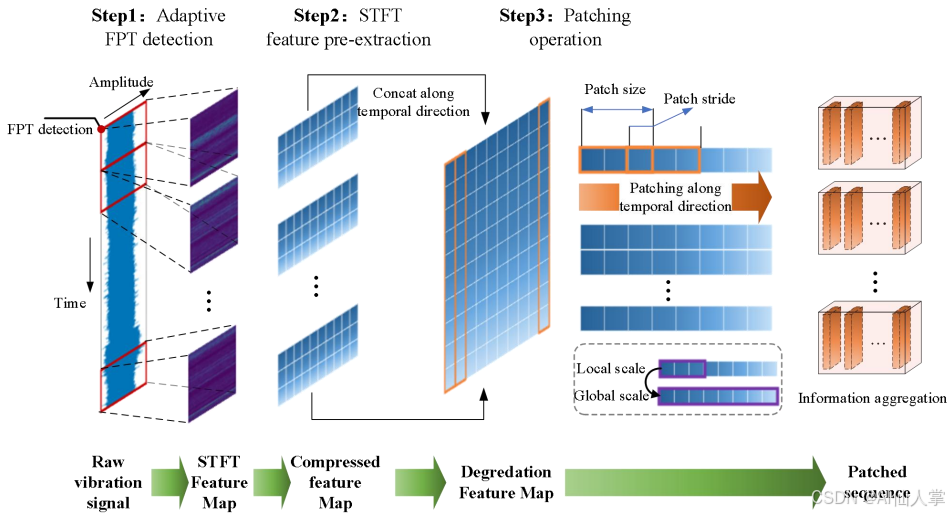
利用LLMs准确预测旋转机械(如轴承)的剩余使用寿命(RUL)
研究背景 研究问题:如何准确预测旋转机械(如轴承)的剩余使用寿命(RUL),这对于设备可靠性和减少工业系统中的意外故障至关重要。研究难点:该问题的研究难点包括:训练和测试阶段数据分布不一致、长期RUL预测的泛化能力有限。相关工作:现有工作主要包括基于模型的方法、数…...

深度学习 PyTorch 中 18 种数据增强策略与实现
深度学习pytorch之简单方法自定义9类卷积即插即用 数据增强通过对训练数据进行多种变换,增加数据的多样性,它帮助我们提高模型的鲁棒性,并减少过拟合的风险。PyTorch 提供torchvision.transforms 模块丰富的数据增强操作,我们可以…...

视觉图像处理
在MATLAB中进行视觉图像处理仿真通常涉及图像增强、滤波、分割、特征提取等操作。以下是一个分步指南和示例代码,帮助您快速入门: 1. MATLAB图像处理基础步骤 1.1 读取和显示图像 % 读取图像(替换为实际文件路径) img = imread(lena.jpg); % 显示原图 figure; subplot(2…...

深度学习与普通神经网络有何区别?
深度学习与普通神经网络的主要区别体现在以下几个方面: 一、结构复杂度 普通神经网络:通常指浅层结构,层数较少,一般为2-3层,包括输入层、一个或多个隐藏层、输出层。深度学习:强调通过5层以上的深度架构…...

Vue3、vue学习笔记
<!-- Vue3 --> 1、Vue项目搭建 npm init vuelatest cd 文件目录 npm i npm run dev // npm run _ 这个在package.json中查看scripts /* vue_study\.vscode可删 // vue_study\src\components也可删除(基本语法,不使用组件) */ // vue_study\.vscode\lau…...

python中C#类库调用+调试方法~~~
因为开发需要,我们经常会用C#来写一些库供python调用,但是在使用过程中难免会碰到一些问题,需要我们抽丝剥茧来解决~~~ 首先,我们在python中要想调用C#(基于.net)的dll,需要安装一个库,它就是 pythonnet …...

L33.【LeetCode笔记】循环队列(数组解法)
目录 1.题目 2.分析 方法1:链表 尝试使用单向循环链表模拟 插入节点 解决方法1:开辟(k1)个节点 解决方法2:使用变量size记录队列元素个数 获取队尾元素 其他函数的实现说明 方法2:数组 重要点:指针越界的解决方法 方法1:单独判断 方法2:取模 3.数组代码的逐步实现…...

css实现元素垂直居中显示的7种方式
文章目录 * [【一】知道居中元素的宽高](https://blog.csdn.net/weixin_41305441/article/details/89886846#_1) [absolute 负margin](https://blog.csdn.net/weixin_41305441/article/details/89886846#absolute__margin_2) [absolute margin auto](https://blog.csdn.net…...

【Python】Django 中的算法应用与实现
Django 中的算法应用与实现 在 Django 开发中,算法的应用可以极大地扩展 Web 应用的功能和性能。从简单的数据处理到复杂的机器学习模型,Django 都可以作为一个强大的后端框架来支持这些算法的实现。本文将介绍几种常见的算法及其在 Django 中的使用方法…...

Docker 运行 GPUStack 的详细教程
GPUStack GPUStack 是一个用于运行 AI 模型的开源 GPU 集群管理器。它具有广泛的硬件兼容性,支持多种品牌的 GPU,并能在 Apple MacBook、Windows PC 和 Linux 服务器上运行。GPUStack 支持各种 AI 模型,包括大型语言模型(LLMs&am…...

Kubernetes中的 iptables 规则介绍
#作者:邓伟 文章目录 一、Kubernetes 网络模型概述二、iptables 基础知识三、Kubernetes 中的 iptables 应用四、查看和调试 iptables 规则五、总结 在 Kubernetes 集群中,iptables 是一个核心组件, 用于实现服务发现和网络策略。iptables 通…...

解决VScode 连接不上问题
问题 :VScode 连接不上 解决方案: 1、手动杀死VS Code服务器进程,然后重新尝试登录 打开xshell ,远程连接服务器 ,查看vscode的进程 ,然后全部杀掉 [cxqiZwz9fjj2ssnshikw14avaZ ~]$ ps ajx | grep vsc…...

AI 驱动的软件测试革命:从自动化到智能化的进阶之路
🚀引言:软件测试的智能化转型浪潮 在数字化转型加速的今天,软件产品的迭代速度与复杂度呈指数级增长。传统软件测试依赖人工编写用例、执行测试的模式,已难以应对快速交付与高质量要求的双重挑战。人工智能技术的突破为测试领域注…...
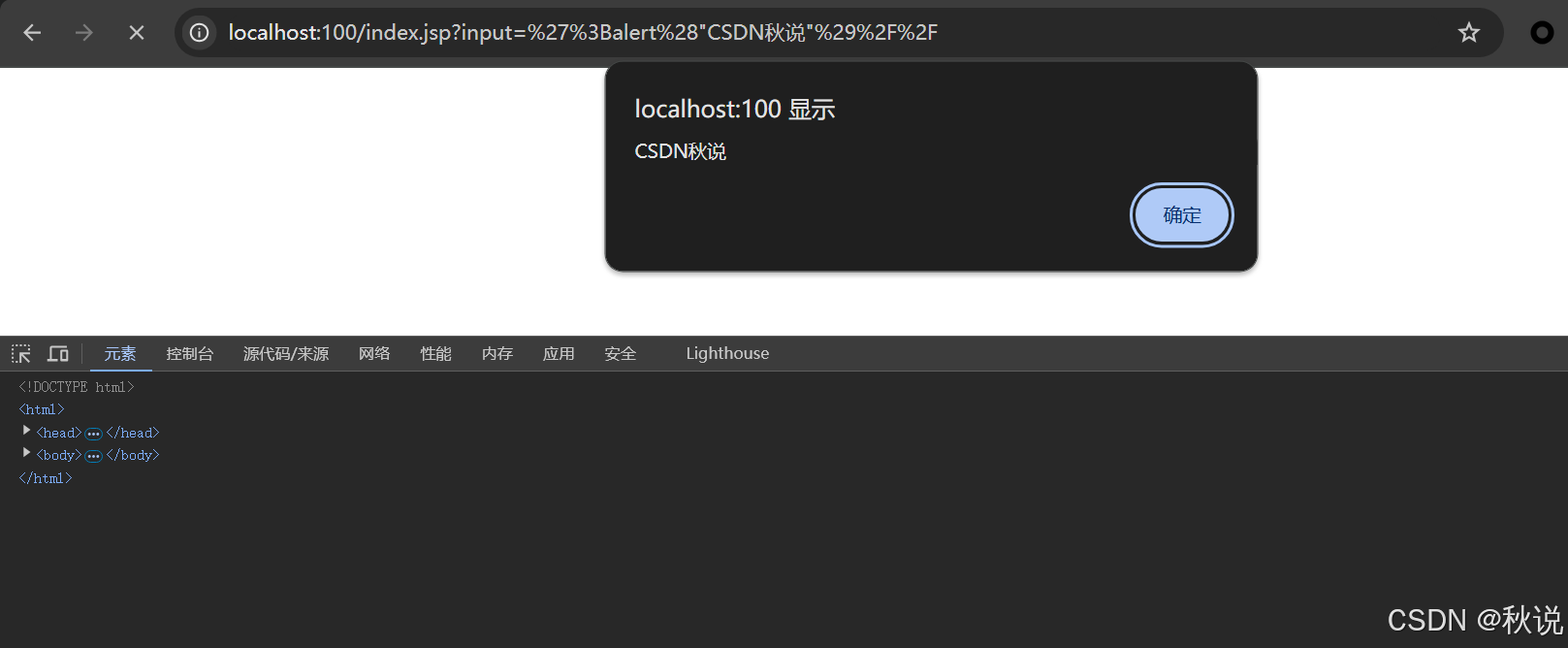
【Java代码审计 | 第六篇】XSS防范
文章目录 XSS防范使用HTML转义使用Content Security Policy (CSP)输入验证使用安全的库和框架避免直接使用用户输入构建JavaScript代码 XSS防范 使用HTML转义 在输出用户输入时,对特殊字符进行转义,防止它们被解释为HTML或JavaScript代码。 例如&…...

Android WebSocket工具类:重连、心跳、消息队列一站式解决方案
依赖库 使用 OkHttp 的WebSocket支持。 在 build.gradle 中添加依赖: implementation com.squareup.okhttp3:okhttp:4.9.3WebSocket工具类实现 import okhttp3.*; import android.os.Handler; import android.os.Looper; import android.util.Log;import java.ut…...
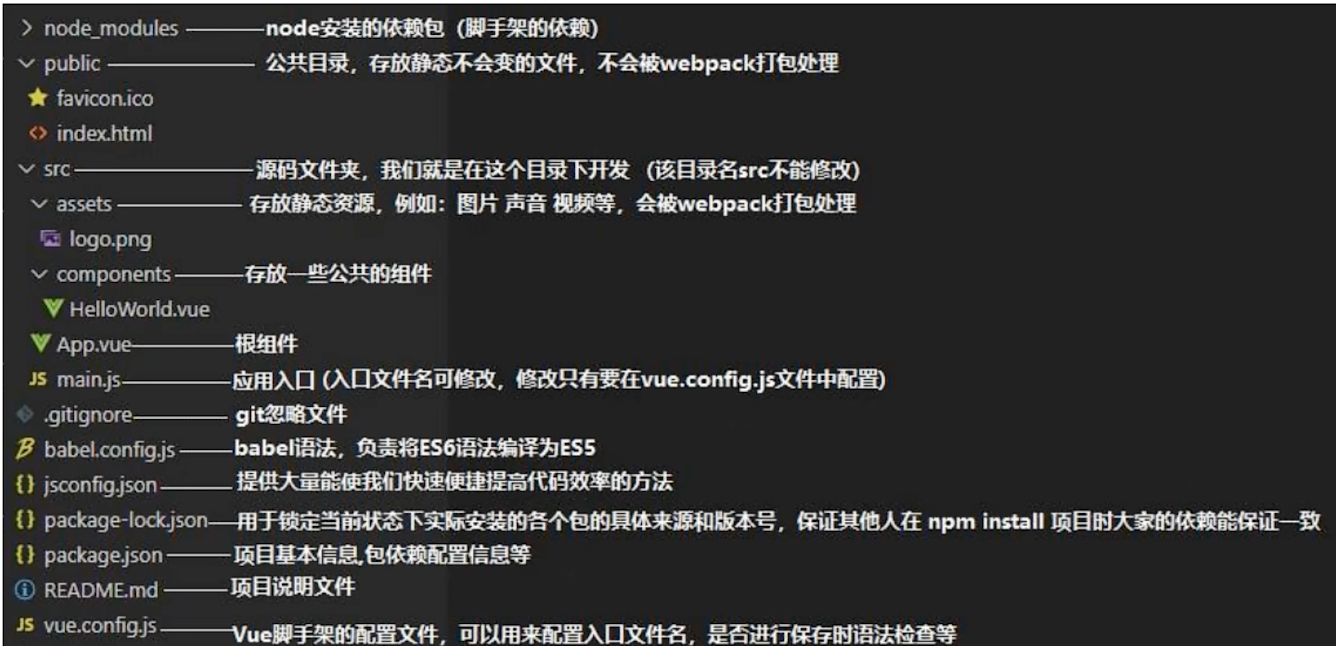
认识vue2脚手架
1.认识脚手架结构 使用VSCode将vue项目打开: package.json:包的说明书(包的名字,包的版本,依赖哪些库)。该文件里有webpack的短命令: serve(启动内置服务器) build命令…...
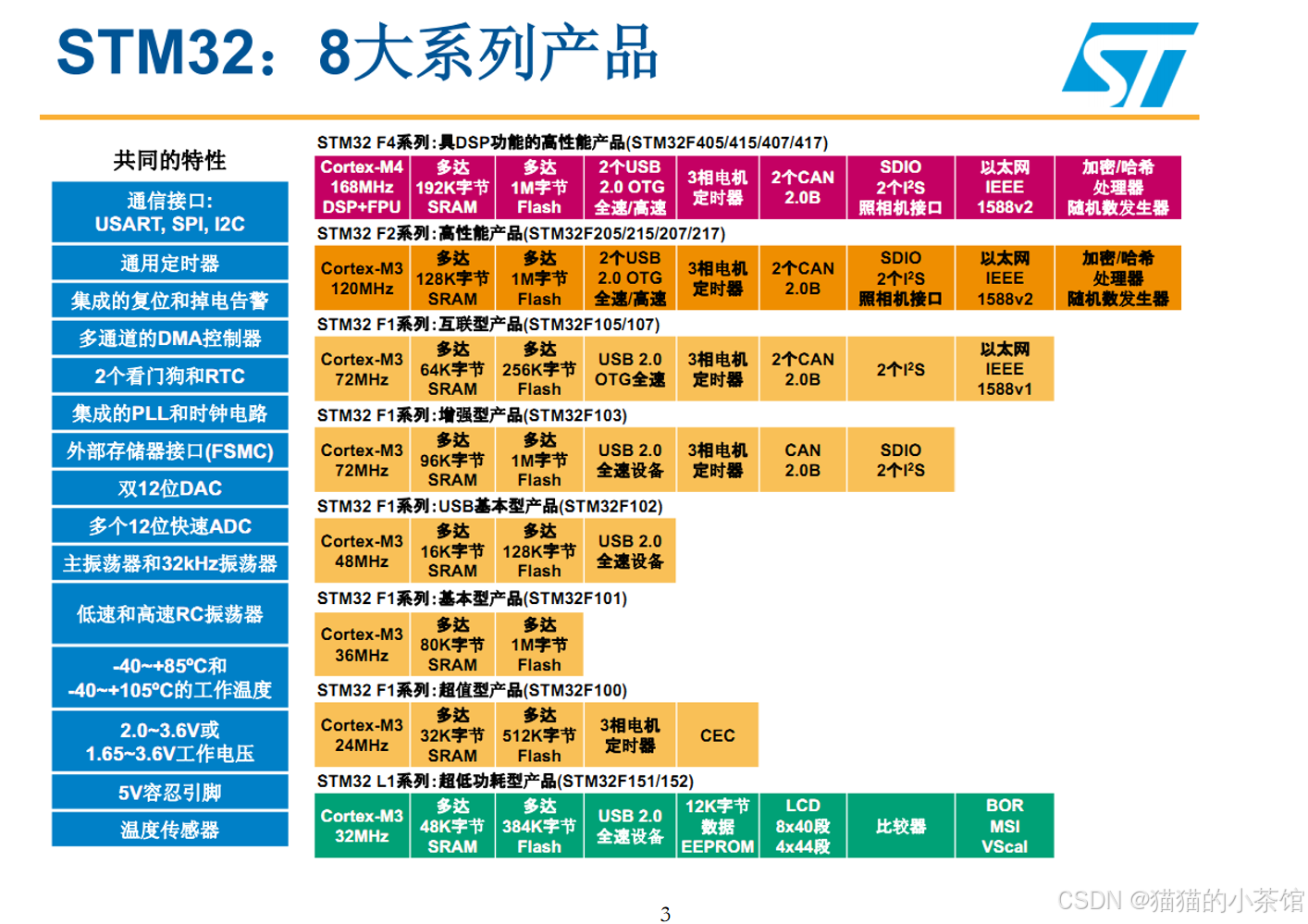
【STM32】STM32系列产品以及新手入门的STM32F103
📢 STM32F103xC/D/E 系列是一款高性能、低功耗的 32 位 MCU,适用于工业、汽车、消费电子等领域;基于 ARM Cortex-M3,主频最高 72MHz,支持 512KB Flash、64KB SRAM,适合复杂嵌入式应用,提供丰富的…...

Python爬虫实战:研究MechanicalSoup库相关技术
一、MechanicalSoup 库概述 1.1 库简介 MechanicalSoup 是一个 Python 库,专为自动化交互网站而设计。它结合了 requests 的 HTTP 请求能力和 BeautifulSoup 的 HTML 解析能力,提供了直观的 API,让我们可以像人类用户一样浏览网页、填写表单和提交请求。 1.2 主要功能特点…...

反向工程与模型迁移:打造未来商品详情API的可持续创新体系
在电商行业蓬勃发展的当下,商品详情API作为连接电商平台与开发者、商家及用户的关键纽带,其重要性日益凸显。传统商品详情API主要聚焦于商品基本信息(如名称、价格、库存等)的获取与展示,已难以满足市场对个性化、智能…...

Auto-Coder使用GPT-4o完成:在用TabPFN这个模型构建一个预测未来3天涨跌的分类任务
通过akshare库,获取股票数据,并生成TabPFN这个模型 可以识别、处理的格式,写一个完整的预处理示例,并构建一个预测未来 3 天股价涨跌的分类任务 用TabPFN这个模型构建一个预测未来 3 天股价涨跌的分类任务,进行预测并输…...
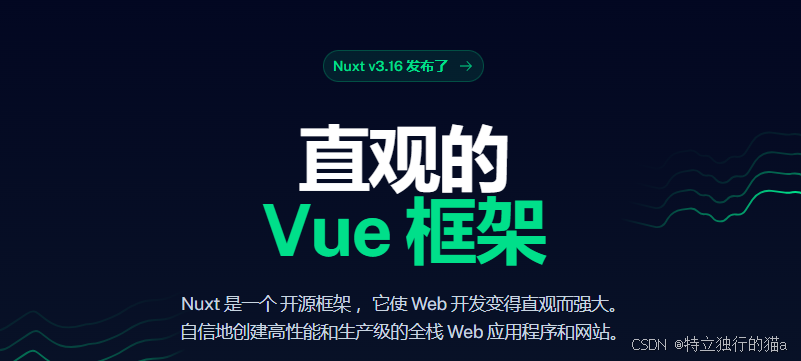
Nuxt.js 中的路由配置详解
Nuxt.js 通过其内置的路由系统简化了应用的路由配置,使得开发者可以轻松地管理页面导航和 URL 结构。路由配置主要涉及页面组件的组织、动态路由的设置以及路由元信息的配置。 自动路由生成 Nuxt.js 会根据 pages 目录下的文件结构自动生成路由配置。每个文件都会对…...

Ascend NPU上适配Step-Audio模型
1 概述 1.1 简述 Step-Audio 是业界首个集语音理解与生成控制一体化的产品级开源实时语音对话系统,支持多语言对话(如 中文,英文,日语),语音情感(如 开心,悲伤)&#x…...

2023赣州旅游投资集团
单选题 1.“不登高山,不知天之高也;不临深溪,不知地之厚也。”这句话说明_____。 A、人的意识具有创造性 B、人的认识是独立于实践之外的 C、实践在认识过程中具有决定作用 D、人的一切知识都是从直接经验中获得的 参考答案: C 本题解…...

uniapp 字符包含的相关方法
在uniapp中,如果你想检查一个字符串是否包含另一个子字符串,你可以使用JavaScript中的includes()方法或者indexOf()方法。这两种方法都可以达到目的,但它们在处理方式和返回值上有所不同。 使用includes()方法 includes()方法用于判断一个字…...
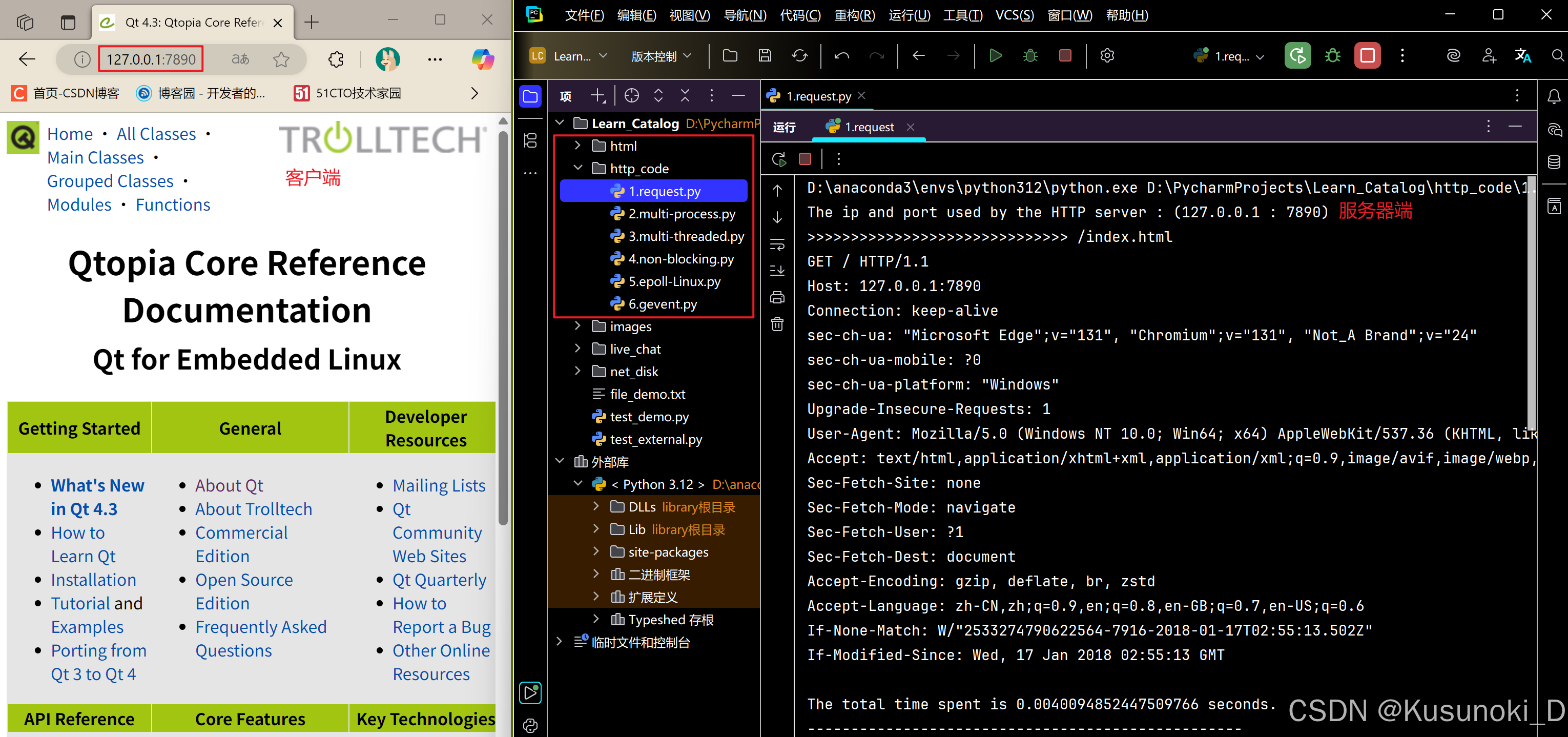
Python 实现 Web 静态服务器(HTTP 协议)
目录 一、在本地启动 HTTP 服务器1. Windows 下安装 node.js1)下载安装包2)配置环境变量3)安装镜像4)node.js 的常用命令 2. 安装 http-server 服务3. 使用 http-server 开启服务1)使用 http-server2)详解 …...

MySQL 索引底层结构揭秘:B-Tree 与 B+Tree 的区别与应用
文章目录 一、背景知识:什么是 B-Tree 和 BTree? B-Tree(平衡多路查找树) BTree(B-Tree 的变种) 二、结构对比:一张图看懂 三、为什么 MySQL InnoDB 选择 BTree? 1. 范围查询更快 2…...

第一篇:Liunx环境下搭建PaddlePaddle 3.0基础环境(Liunx Centos8.5安装Python3.10+pip3.10)
第一篇:Liunx环境下搭建PaddlePaddle 3.0基础环境(Liunx Centos8.5安装Python3.10pip3.10) 一:前言二:安装编译依赖二:安装Python3.10三:安装PIP3.10四:安装Paddlepaddle基础框架4.1…...
